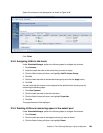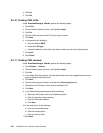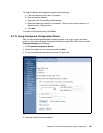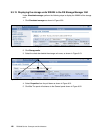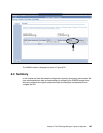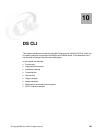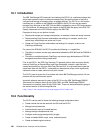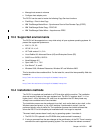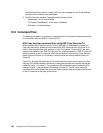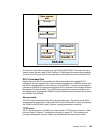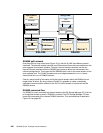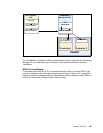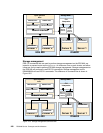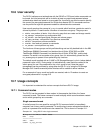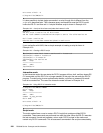
Chapter 10. DS CLI 197
Manage host access to volumes
Configure host adapter ports
The DS CLI can be used to invoke the following Copy Services functions:
FlashCopy - Point-in-time Copy
IBM TotalStorage Metro Mirror - Synchronous Peer-to-Peer Remote Copy (PPRC)
IBM TotalStorage Global Copy - PPRC-XD
IBM TotalStorage Global Mirror - Asynchronous PPRC
10.3 Supported environments
The DS CLI will be supported on a very wide variety of open systems operating systems. At
present the supported systems are:
AIX 5.1, 5.2, 5.3
HP-UX 11i v1, v2
HP Tru64 version 5.1, 5.1A
Linux RedHat 3.0 Advanced Server (AS) and Enterprise Server (ES)
SUSE Linux SLES 8, SLES 9
Novell Netware 6.5
Open VMS 7.3-1, 7.3-2
Sun Solaris 7, 8, and 9
Windows 2000, Windows Datacenter, Windows XP and Windows 2003
This list should not be considered final. For the latest list, consult the interoperability Web site
located at:
http://www.ibm.com/servers/storage/disk/ds6000/interop.htm
or:
http://www.ibm.com/servers/storage/disk/ds8000/interop.htm
10.4 Installation methods
The DS CLI is supplied and installed via a CD that ships with the machine. The installation
does not require a reboot of the open systems host. The DS CLI requires Java™ 1.4.1 or
higher. Java 1.4.2 for Windows, AIX, and Linux is supplied on the CD. Many hosts may
already have a suitable level of Java installed.
The installation process can be performed via a shell, such as the bash or korn shell, or the
Windows command prompt, or via a GUI interface. If performed via a shell, it can be
performed silently using a profile file. The installation process also installs software that
allows the DS CLI to be completely de-installed should it no longer be required.
The exact install process doesn’t really vary by operating system. It consists of:
1. The DS CLI CD is placed in the CD-ROM drive (and mounted if necessary).
2. If using a command line, the user changes to the root directory of the CD. There is a setup
command for each supported operating system. The user issues the relevant command



